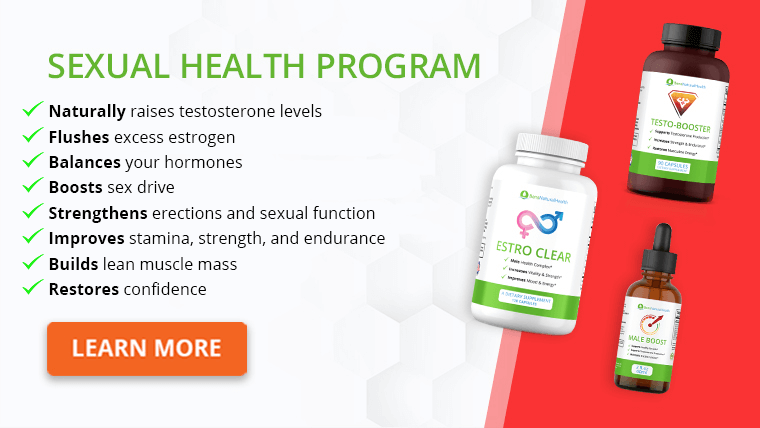There are different methods to prevent unplanned pregnancies.
Some methods are for females, and others for males.
Some of the common contraception methods are using oral pills by females and condoms by males.
When it comes to males, there are fewer options, and regular use of condoms remains the most reliable way to prevent pregnancies.
One of the effective ways for men to prevent pregnancies is male sterilization or vasectomy.
It’s a surgical procedure where doctors cut and seal the tubes that carry sperms from testicles to the outside (definition of vasectomy).
It is a surgical operation taking about 15 minutes, causes minimal pain, and is a highly effective way of contraception.
It is close to 100% effective in preventing pregnancies. In addition, it allows men to enjoy sex without a barrier.
Can a vasectomy be reversed?
Several hundred thousand men undergo vasectomy in the US and different European nations each year. These are primarily men who firmly believe that they would not want to have children in the future. In all the cases, men undergo this operation when they think that a need to reverse things would not arise.
However, in practice, things differ significantly. In some cases, men realize that they want to have children.
A common reason is a remarriage. Studies estimate that about 6% of men who undergo vasectomy would like to get it reversed sometime in their lifetime. Therefore, surgeries for vasectomy reversal are not rare.
So, yes, reversing a vasectomy is possible, and one of the most common ways of its reversal is vasovasostomy. Generally, results are quite good after such a surgery. But of course, lots would depend on the duration a person has been living with vasectomy and the age of the patient.
What is a vasovasostomy procedure?
For those looking to reverse vasectomy and have children, vasovasostomy is the procedure of choice. It is a minor surgical operation with great results. Moreover, it is considered a relatively safe surgical treatment.
During a vasectomy, doctors cut the vas deferens, which is a tube that carries sperms from testicles to the outside during ejaculation. After cutting the tube, they just close both its ends. However, as one can guess, it is also possible to reconnect the tube and thus revive sperm transportation again.
Hence, doctors would make a small incision in vasovasostomy and reconnect the tube that carries the sperm. Generally, doctors carry out the procedure under local anesthesia.
So, the reply to the common question, can you get a vasectomy reversed, is yes. And, how successful is a vasectomy reversal? Well, above 80% is the reversal rate of vasectomy. Though, how effective a vasectomy reversal is, is a different question.
Reconnecting the tubes is not easy, resulting in significant local pain and trauma. Thus, there is a considerable local inflammation. Reversing a vasectomy procedure causes some pain, but this is not long-lasting.
One should not confuse vasovasostomy with another kind of operation to restore male fertility called vasoepididymostomy (1).
Vasoepididymostomy is a relatively more complex procedure, and it is needed for those in whom doctors find blockage of sperms in the epididymis (epididymis blockage or epididymal blockage). Often, doctors may discover such a blockage during the vasovasostomy, and then they may decide to carry out a different kind of operation.

Who is a good candidate for a vasovasostomy?
Vasovasostomy is quite a safe and most successful operation to restore male fertility. However, many factors decide the success of such an operation.
Some individuals may have less favorable outcomes than expected. Thus, knowing what kind of person is a candidate for vasovasostomy is good.
Perhaps the most important factor to consider is the duration of vasectomy. Studies show that those who had less than 15 years since vasectomy are better candidates. Here, needless to say, the smaller the interval between vasectomy and vasovasostomy, the better the results.
Studies show that those who undergo this operation of vasectomy reversal after 15 years have inferior outcomes (2). This is easy to understand, as after so much time has passed, considerable changes have occurred in the spermatic cord.
In addition, it means that there is a significant growth of connective tissues, and there might be certain degenerative processes. All this makes reconnecting the sperm tube quite difficult.
Additionally, the right candidate is the one who must not have undergone many surgeries in the groin region. For example, men who had treatment for inguinal hernia or hydrocele may make bad candidates for the vasectomy reversal surgery, as they are more likely to be living with significant overgrowth of connective tissues, which also interferes with the vasovasostomy.
Finally, lots would also depend on how the vasectomy surgery was done and how much of the vas deferens or the tubing was removed.
Ideally, doctors would cut the sperm tube and then close both ends. However, sometimes they may need to remove part of the sperm tube, which may shorten its length. This shortening of length would not cause any issues, but it makes vasectomy reversal quite challenging.
How effective is vasovasostomy?
Vasovasostomy is quite an effective way of reversing vasectomy. Moreover, it is not a highly invasive surgery, and thus there is a short recovery time after the surgery.
It is worth knowing that vasovasostomy is not among the rare surgeries. Each year surgeons carry out thousands of such surgeries in the US, EU, and other nations.
Generally, surgeons do not classify it as a complex surgery. In most cases, it is a day of surgery, and a person can go back home on the same day. Moreover, the surgery is done under local anesthesia.
When it comes to its success rates, it is quite a well-studied subject. Studies show that it has a success rate of about 85%.
This means that most men can expect a return of normal sperm ejaculation after the surgery. However, when it comes to pregnancies, just little more than half of all men can expect to have a child. Adequate spermatogenesis may not occur in all cases, thus causing male infertility.
One must understand that successful surgery does not guarantee the return of fertility or pregnancy. Moreover, pregnancy depends on both partners.
Additionally, it is worth understanding that most men who undergo vasovasostomy are not young adults. Therefore, it also means that their partner may also have fertility issues due to aging.
Therefore, experts recommend that those looking to reverse vasectomy undergo a medical examination. Doctors would generally check the condition of testicles, hormone levels, and more.
It is also good for the partner to undergo thorough testing to exclude infertility. After all, even if the surgery is completely successful, going through all the pain may be of no use if the partner has some severe issue and cannot become pregnant.
What to expect after the procedure?
One can expect sperm production to return to quite a good level in more than 80% of the cases. However, lots would depend on the patient’s age, and how long one has been living with vasectomy.
However, the return of sperm production does not mean normal fertility. For many, living with prolonged blockage means reduced sperm quantity and quality.
This means that one may still need to go through some fertility treatment. Doctors may prescribe various medications and even hormones to boost sperm production.
Get Your FREE Low Testosterone Diet Plan
- The ultimate testosterone boosting diet
- combined with exercise & lifestyle advice
- Developed exclusively by our nutritionist
Does a vasovasostomy hurt?
As the surgery is minimally invasive and done under local anesthesia, the pain is not severe. Nevertheless, as the effect of the anesthesia subsides, one would experience moderate pain at the site of the incision.
Fortunately, vasovasostomy does not hurt much, and the pain would barely last a few days. Generally, a person may feel quite well after a week. However, a person may need much more time for complete recovery.
Generally, a complete wound healing in this kind of surgery requires 8-12 weeks, depending on the patient’s health status. After this, one can engage in strenuous physical activities and regular sex.
Side effects and risks
Though the success rate is quite good, it is not a hundred percent. It means that some complications and issues occur.
These issues are not very rare. Hence, many may continue to experience local pain for much longer than expected.
In rare cases, the surgical site may get infected, which is not good, as it may also affect fertility due to the formation of strictures. In others, there may be a formation of a hematoma. Finally, in some men, connective tissues may overgrow, thus blocking the spermatic cord, which may result in the failure of the surgery.
So, yes, there are certain risks. These issues may also affect sex life for a limited time. Nonetheless, most of these issues are self-limiting. Therefore, even if the surgery fails to revive fertility or reverse vasectomy, it will not affect male sexual function.
Recovery tips
So, you had a vasovasostomy, and you are feeling quite well after that. However, that is not all. Though the acute phase might be over quite quickly and medical results may look more or less fine, however, this does not mean that everything is perfect.
It means that one would need to carry out some efforts to improve recovery. Here, the purpose is not just to improve post-surgical wound recovery but also to take measures to ensure optimal sperm production.
It is worth understanding that if a person has been living with vasectomy for several years, sperm production will not normalize immediately, and it needs some time. Moreover, one would also need to carry out many lifestyle changes.
Hence, once the acute phase is over, one should engage in moderate exercise and start taking natural supplements and vitamins to boost sperm production. In addition, increasing dietary protein intake and consuming green vegetables may also help boost fertility and promote recovery.
Conclusion
Vasectomy is an optimal solution for men not aiming to have any children in the future. It means that both the partners can enjoy sex without worrying about the unwanted pregnancy.
However, sometimes things do not go as planned. In such cases, men would like to have their vasectomy reversed, as they would like to have a child.
The good news is that vasectomy reversal is possible, and most men can expect to have a child. The most common surgical intervention for vasectomy reversal is vasovasostomy.
Explore More








